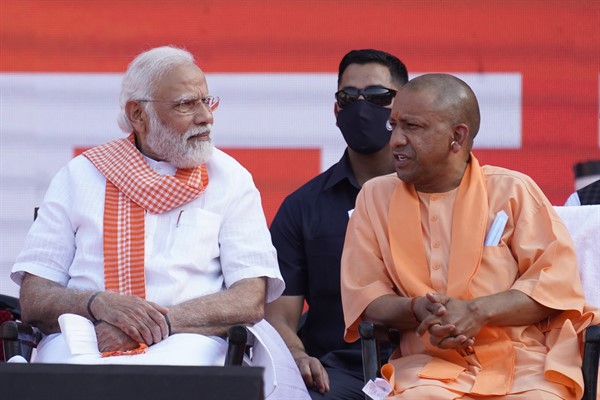Indian Prime Minister Narendra Modi’s ruling party, the Bharatiya Janata Party, or BJP, put on an extraordinary performance in recent state elections, winning 4 out of the 5 states that went to the polls in February and March. Not only did the BJP manage to win reelection in the states of Goa and Uttarakhand, despite polls suggesting high levels of anti-incumbent sentiment, it also put on a commanding performance in Uttar Pradesh, India’s largest state with a population of over 200 million and nearly one-sixth of the country’s population. This allowed incumbent Chief Minister Yogi Adityanath, a hardline Hindu monk and BJP member, to become the first-ever chief minister to be reelected in Uttar Pradesh after completing a full term.
The BJP sweep of state elections is likely to have important legislative consequences. The party will now hold more than 100 seats in the Rajya Sabha, India’s upper house of parliament, the first time this has happened since 1990. This means that, while still short of a majority in the 245-member assembly, the BJP is inching closer to removing the last check on its national executive and legislative power.
More broadly, the BJP’s success underscores three key takeaways for Indian politics. First, the BJP still faces little electoral threat from national-level opposition parties, whether they form a coalition or not. Second, under Modi, the party has succeeded at becoming a formidable factor not just nationally, but also at the state level, where it had often struggled in the past. Finally, these successes are very likely to embolden the prime minister and his party to attempt to further consolidate power.

